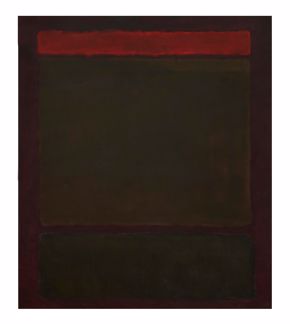What is Abstract Expressionism? September 30, 2015

Mark Rothko, No. 14 (Painting), 1961, oil on canvas, the Museum of Fine Arts, Houston, Museum purchase. © 1998 Kate Rothko Prizel & Christopher Rothko / Artists Rights Society (ARS), New York
“Abstract Expressionism” refers to the art movement that flourished in New York in the 1940s and 1950s. Its leading figures included Mark Rothko, Barnett Newman, Clyfford Still, Franz Kline, Willem de Kooning, and Jackson Pollock. Few artists in this loosely affiliated circle of painters, however, considered themselves “Abstract Expressionists,” “Action Painters,” or a “New York School”—terms applied by curators and critics attempting to define these artists’ highly abstract works of art.
Most scholars identify two major stylistic tendencies within Abstract Expressionism: Action Painting, as shown by the energetic and gestural brushstrokes of Kline or the flung paint of Pollock; and Color Field painting, as seen in the simplified, open areas of color favored by Newman and Rothko.
Despite their different styles, the Abstract Expressionists stressed the importance of directness in painting and shared a strong belief in the power of abstraction to convey timeless meaning. They moved beyond the easel, creating large-scale paintings with often nontraditional art materials, such as commercial house paints.
You might be surprised to find that many Abstract Expressionists started out as figurative painters—that is, they painted in a more naturalistic tradition, including figures, still-life subjects, and cityscapes. In the 1930s Rothko depicted scenes of New York streets and subways. At the same time, Pollock, a student of Thomas Hart Benton, painted rural landscapes.
During the 1940s, the imagery of these artists and their contemporaries became increasingly abstract, prompted in part by their contact with the influx of European avant-garde painters fleeing to New York from war-torn Europe.
Visit the Long Sarofim Gallery, on the ground floor of the Museum’s Beck Building, to view signature examples of Abstract Expressionist art, with canvases by Kline, de Kooning, Pollock, Still, Philip Guston, and Hans Hofmann. These artists formed close alliances, argued with one another at times, and were ultimately unified by their ambition and belief in the power of American art. If you look closely at their work, you’ll find that connections abound.
See the scope of one Abstract Expressionist pioneer’s career in “Mark Rothko: A Retrospective,” on view through January 24.





